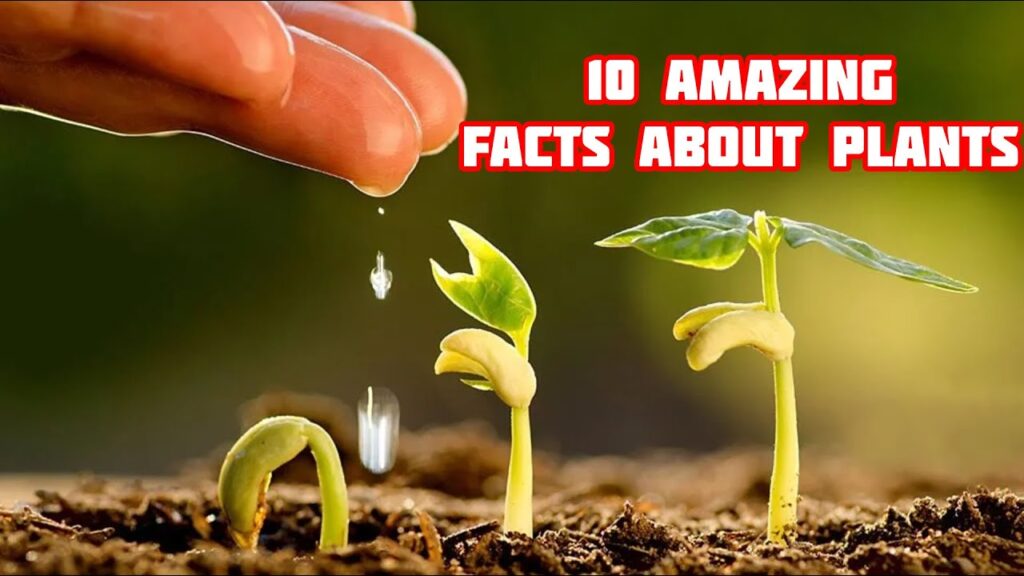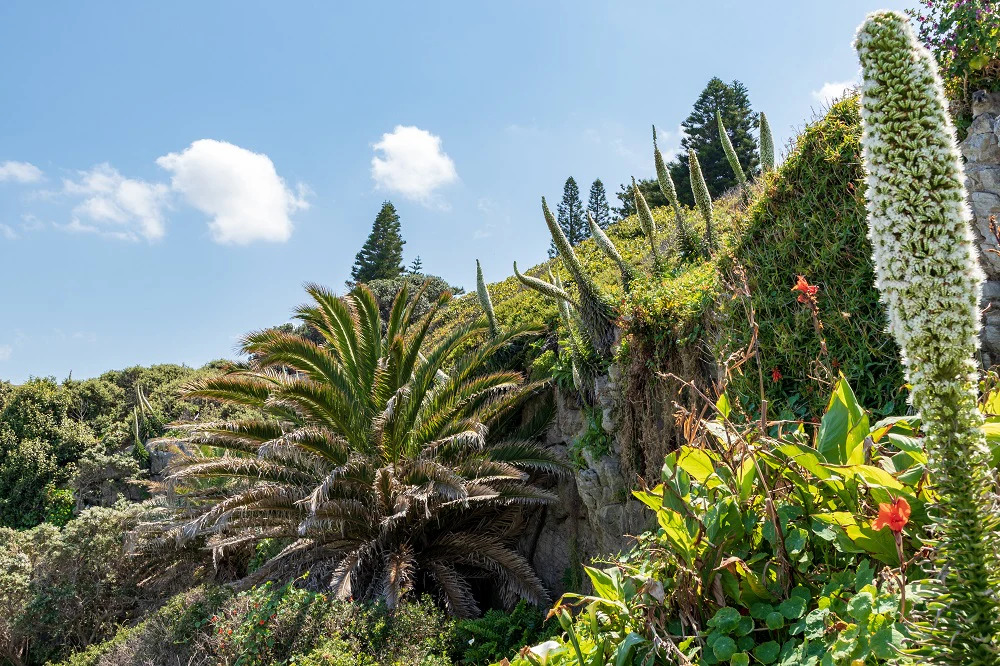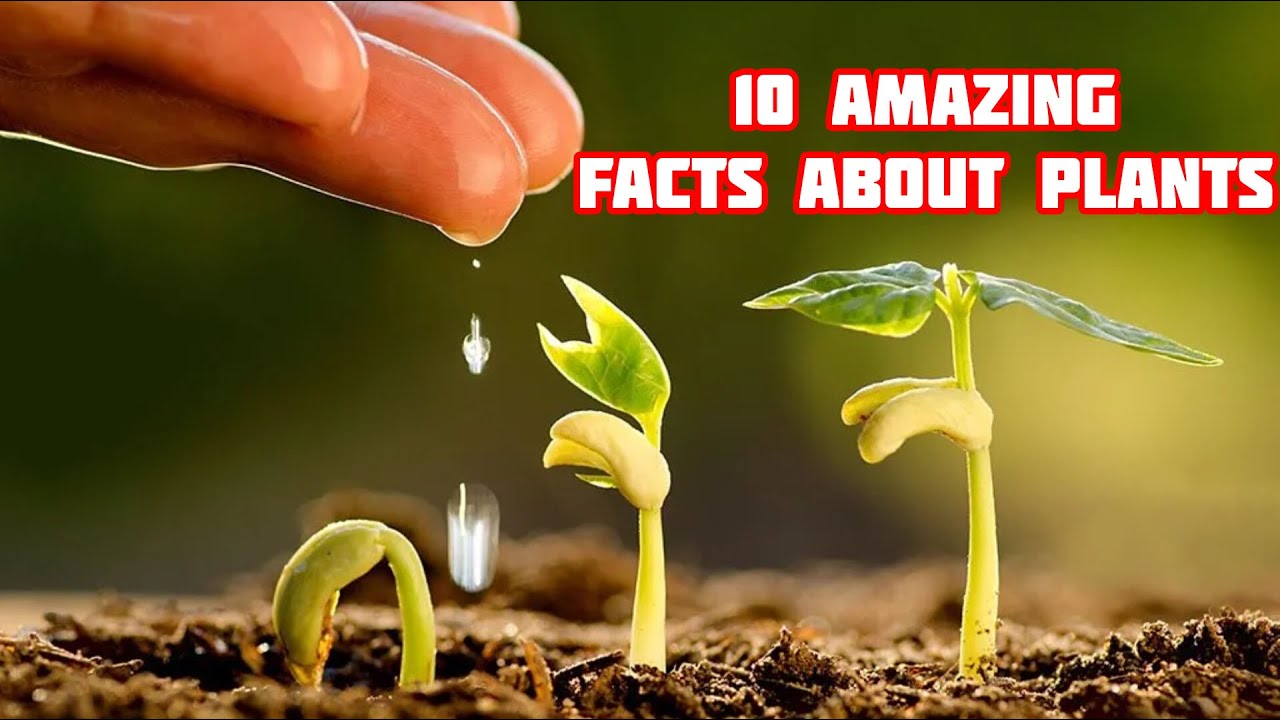Table of Contents
ToggleTop 10 Amazing Facts About Plants
Among the most amazing creatures on the planet, plants are vital to the continuation of life. Plants are essential to the ecosystems of the world because they supply food, shelter, oxygen, and other necessities.
Beyond their widely recognized uses, though, plants have a variety of intriguing qualities that many people may not be aware of. We’ll look at ten incredible plant facts in this extensive blog article that highlight the diversity, complexity, and significance of plants.

Here’s top 10 amazing and unknown facts that will surprise you.
1. Plants Can Communicate with Each Other
The capacity for communication among plants is among their most amazing characteristics. Despite not using language like people do, plants have evolved sophisticated communication mechanisms. VOCs, or volatile organic compounds, are emitted by plants to alert nearby plants to possible threats like herbivore attacks.
For instance, a plant may emit chemicals into the atmosphere to warn other plants when it is being attacked by insects. Then, in an effort to repel the insects, these nearby plants create defense compounds of their own. Some plants also use mycorrhizae, a fungus network, to communicate through their root systems. Plants are able to exchange nutrients and even communicate distress through this subterranean network.
2. The Oldest Living Plants Are Thousands of Years Old
Certain plants can live for thousands of years, which is an amazing longevity. One of the oldest surviving trees in the world is the bristlecone pine, which grows in the western United States. The oldest known individual tree, dubbed “Methuselah,” is over 4,800 years old. These old trees have endured millennia, braving severe climates and altering environments.
Comparably, one of the oldest living things is the Pando, a clonal colony of quaking aspen trees in Utah. The colony’s total root system is estimated to be around 80,000 years old, making it one of the planet’s most lasting plant creatures, even though the individual trees within are not that old.
3. Plants Can Move and Respond to Their Environment
Despite the common misconception that plants are immobile, several species are able to move and react to their surroundings. Tropism is the term for this movement that happens in reaction to different stimuli like touch, gravity, and light. For instance, a plant that grows toward light is said to be phototropist. By doing this, the plant is able to get as much sunlight as possible, which is essential for photosynthesis.
Another way that plants move is by strigotropism, in which they react to contact. This tendency is seen in climbing plants, such as vines, which wrap around objects to provide support. Furthermore, certain plants—like the Venus flytrap—have the ability to move quickly in order to catch prey. The trap closes and the plant is free to digest its meal when an insect lands on the delicate hairs on its leaves.
4. Plants Can Survive in Extreme Conditions
In order to live in some of the most hostile settings on Earth, plants have adapted. Plants have evolved to survive in harsh environments, ranging from icy tundras to sweltering deserts. For example, the amazing plant Welwitschia mirabilis, which is indigenous to the Namib Desert, can live for a very long time without much water. It can live for up to 2,000 years and has just two leaves that develop constantly.
On the other hand, the Arctic Poppy, which lives on the icy tundra, has evolved to withstand extremely low temperatures. Its blooms exhibit heliotropism, or following the sun, to maximize the quantity of sunlight they receive—a vital resource for growth in such a frigid climate.
5. Some Plants Exhibit Carnivorous Behavior
While the roots of most plants provide them with nourishment, others have evolved carnivorous traits to augment their diet. In order to receive vital elements like nitrogen, carnivorous plants—such as sundews, pitcher plants, and Venus flytraps—capture and digest insects and other tiny animals.
These plants usually grow in soils deficient in nutrients, making it difficult to get enough nutrients using conventional methods. They are able to survive in conditions that would be difficult for other plants by capturing and breaking down prey. For instance, the Venus flytrap traps its prey by having specially designed leaves that snap shut when an insect triggers its sensitive hairs.

6. Plants Can Produce Their Own Sunscreen
Certain plants create their own natural sunscreen to shield themselves from the damaging effects of ultraviolet (UV) light. In high-altitude or tropical regions, where UV exposure is more strong, this is especially crucial for plants. These plants create chemicals called flavonoids and anthocyanins that absorb UV light and shield their cells from harm.
In addition to serving as a sunscreen, these substances also give many plants their vivid hues. Anthocyanins, for instance, give autumn leaves their red and purple colors because they shield the leaves from UV rays as they get ready to fall for the winter.
7. Plants Have Memory and Can Learn
According to recent research, plants are capable of learning from their past experiences and even have a sort of memory. This finding calls into question the conventional wisdom seeing plants as passive beings. For instance, the Mimosa pudica, popularly referred to as the “sensitive plant,” has an intriguing habit of folding its leaves inward upon contact. Scientists have observed that after repeated exposure to harmless stimuli, the plant “learns” that the stimulus is not a threat and ceases closing its leaves.
This ability to recall and adapt is vital for plants’ survival. It enables them to react to their surroundings more skillfully and save energy by preventing them from overreacting to benign stimuli.
8. Plants Can Clean the Air
Because they photosynthesise to release oxygen into the atmosphere and absorb carbon dioxide, plants are essential to preserving the quality of the air. Some plants, though, take it a step farther and eliminate pollutants from the atmosphere. Using their leaves and roots, plants absorb toxic chemicals and pollutants like formaldehyde, benzene, and trichloroethylene in a process called phytoremediation.
Indoor plants that are very good at purifying the air inside are snake plants, peace lilies, and spider plants. These plants are perfect for enhancing the quality of the air in homes and offices because, according to NASA’s Clean Air Study, they can drastically lower the amounts of hazardous substances in the air.
9. Plants Can Detect Gravity
Because of their extraordinary sense of gravity, plants are able to properly orient their growth. This mechanism, called gravitropism, makes sure that shoots grow upward toward the light while roots develop downward into the earth. Plants with specialized cells called statocytes contain microscopic organelles called statoliths that are packed with starch and fall to the bottom of the cell in reaction to gravity. This sets off a signal that determines the direction of the plant’s growth.

A plant needs gravitropism to survive because it allows it to attach to the soil and reach for sunlight. A plant will reposition its development to follow the force of gravity even if it is upside down.
10. Plants Have an Internal Clock
Plants have an internal clock that helps them keep track of time called the circadian rhythm, just like humans do. This internal clock controls a number of physiological functions, including photosynthesis, flower opening, and aroma release in plants. The circadian rhythm plays a critical role in maximizing the development and survival of plants.
To ensure that they draw in the proper pollinators, certain flowers, like morning glories, open their blooms at particular times of the day. The plant’s internal clock, which reacts to external cues like light and temperature, regulates the timing of these activities.
Conclusion
Plants are amazing creatures with a wide range of intricate and fascinating functions. Plants are essential to the survival of life on Earth, serving several functions such as communication, mobility, air filtration, and survival in harsh environments. Their versatility and significance are demonstrated by their capacity to adapt and flourish in a variety of settings. Knowing these fascinating facts about plants not only increases our admiration for them but also emphasizes how important it is to save the natural ecosystem that they depend on.
We’re likely to learn even more surprising truths about the remarkable nature of these silent, green friends as we delve deeper into the realm of plants. Because of the essential functions that plants play in our lives, whether they are found in our homes, gardens, or the wild, they deserve our respect and care.


